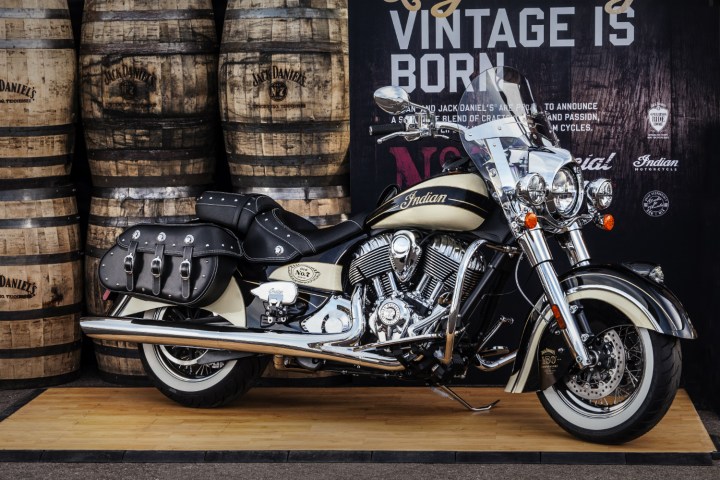
With JD’s 150th birthday coming up, what could be more fitting than celebrating with a fellow American icon? Indian Motorcycle recently announced a limited edition of its Jack Daniel’s-branded Chief Vintage, and it is a stunner.
The 2016 Limited Edition Jack Daniel’s Indian Chief Vintage, which will see very limited production, features Indian accessories and additions inspired by the Jack Daniel’s brand, including custom paint, logos, badging, a leather saddle, and saddlebags. The bike’s front fender is inscribed with the names of the seven master distillers who have supervised the Jack Daniel’s process since its inception.
The first-in-series custom JD Chief Vintage will make its next appearance during Daytona Bike Week in March. It will then head to the October Barrett-Jackson Auction in Las Vegas, where it will be sold to the highest bidder. All proceeds from the sale will go to “Operation Ride Home,” a partnership between the Jack Daniel’s company and the Armed Services YMCA. This foundation helps junior-enlisted members of the military go home for the holidays.
“It’s a pleasure to partner again with our friends at Jack Daniel’s on this project as a tribute to originality and American craftsmanship, and to do so for the benefit of our military personnel and their families,” said Steve Menneto, President of Motorcycles for Polaris Industries. “Jack Daniel’s and Indian Motorcycle proudly support our troops, military families and our veterans and we are honored to join forces again in 2016.”


